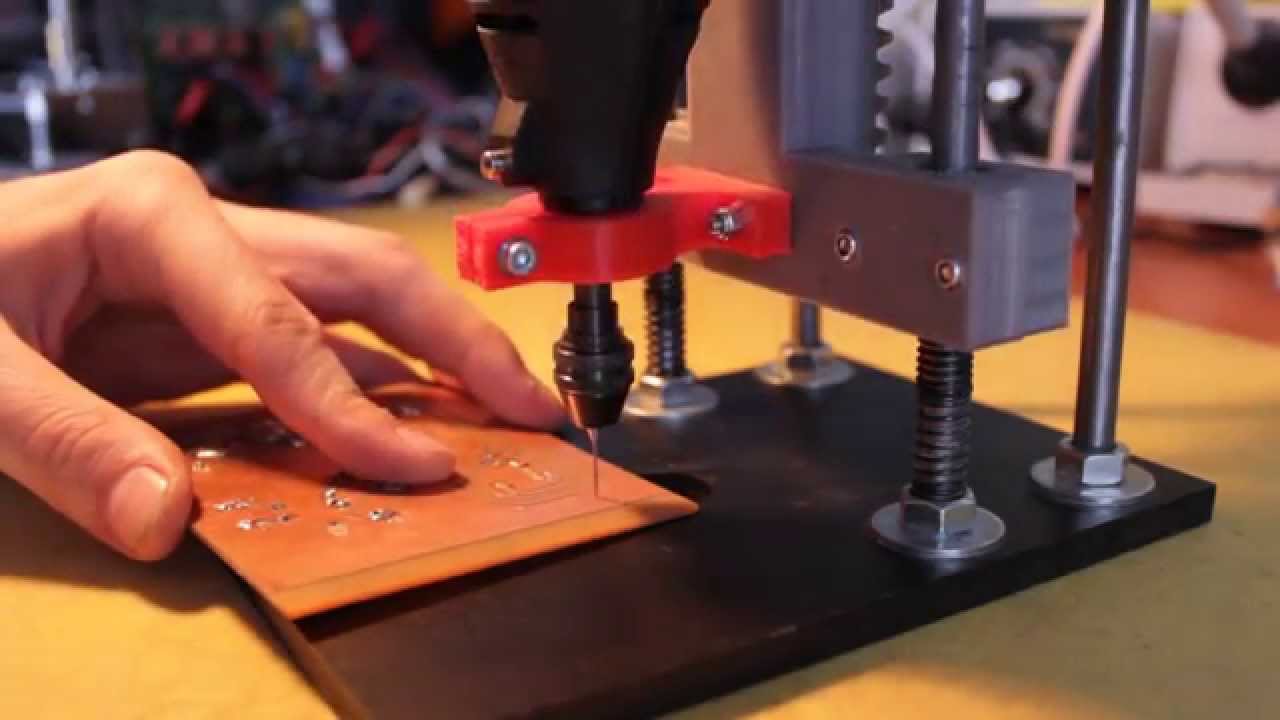General, quoting & support.
Add: Building E, No.58, Nanchang Road, Xixiang , Baoan District Shenzhen City, Guangdong, China
Tel : 0755-27348887
Fax : 0755-27349876
E-mail : svc@pcbastore.com
What You Need to Know about PCB Drill Sizes
Simon / 2021-08-13
Contents [hide]
What are the standard PCB drill sizes? Can one find a customized solution based on the unique requirements? Yes, both standard PCB drill sizes and customized solutions are available. Currently, PCBs are accessible with 10,000 drill holes or even more. You can get different sizes a well. The modern automated CNC devices are used to make any drill size on PCBs. However, if you do not have any specific requirements, you can consider a standard PCB drill size. But if you want to go a step further and make your PCB drill sizes, you can have a look at the following.

Drill Size in PCB Design
There are many components that you can add to a PCB design. Electrical components play a determining role to offer the desired functionality. However, they will require some space, and you will have to attach them to a circuit board. The board needs to have a surface to support the attachments. Here the PCB drills come in.
A hole in the board might create a space for any component. However, it will reduce the surface area. In brief, you will need holes in your PCB to boost its functionality with some new additions. But you will have to make sure that the new addition will not impact the functionality of other parts.
In most conditions, you can consider making standard drills. You will also have the option to add the components that can fit the current holes of your PCB. Both these methods will have some merits and downsides. Therefore, you will have to weigh the positives and negatives to find the most suitable one.
For example, if you use the drill size component, you can save on the CNC equipment. Yes, you will need this equipment to make drills effortlessly. However, you will have to find the right size component to get the best fit for existing drills. If the size does not match, you will be left with no other choice except to make drills. You can choose any method based on your convenience.
Standard PCB Drill Sizes
When it comes to standard PCB drill sizes, the options are many. The manufacturers offer many options on the hole and drill sizes. Therefore, you can find the most suitable one with a bit of research.
Also, the board needs to meet the size demands mentioned in the design drawing. Yes, the board should follow the thickness, perimeter, openings, slots, and cutouts. Apart from that, the wire width error should be within ±5%, and the bonding needs to be within ±0.01mm. In addition to these, the notch must not exceed 1/5 line width. The acceptable line gap error is within ±5%.
Additionally, the error between the part aperture and the designed aperture needs to be 4102 between ±0.05mm while the aperture is ≤0.8 mm. However, when the aperture is > 0.8 mm, the error needs to be ±0.1mm.
Apart from that, the shape and processing size should meet the drawing requirements. The edge and hole distance should be 1.0mm to the minimum. Also, the dimensional tolerance of the edge and hole needs to be ±0.1mm. The hole position tolerance needs to be ±0.10mm.
During the process, the deviation aperture standard needs to be ±0.05mm, and the drilling tolerance for deviation holes will be≤0.076 mm. Besides, the exposed copper pads and foil line will have to maintain a 1.0mm distance from the right and left sides of the board. Also, the copper foil lines will have to maintain a minimum 1.0 mm distance from the stamp connection hole or V-groove of the tear plate.
In addition to all these, the manufacturers follow some other principles. The inner diameter of the hole (full through) needs to be 0.2 mm or more. When it comes to the outer diameter, it needs to be 0.4mm or more.
As mentioned earlier, you will find many standard PCB drill sizes. However, you will have to follow a simple rule to find the best PCB drill size for your project. You will need 0.3 mm wider holes than the component to ensure the best fit. For example, if the component is 0.5mm, you will need 0.8 mm holes. Also, when it comes to SSS specifications, a board should have only 500 holes. For the DSS specification, the maximum number is 2000 holes.
Recommended PCB Drill Sizes
You can choose a size based on your project needs. We can say that you can go with standard parts. However, the standard parts will not be the same, and you can be confused. Apart from that, they might not serve your purpose.
Before choosing any drill size, you will have to consider the ratio of PCB. Yes, the ratio between the thinness of the board and your recommended drill size will help you to choose the right size for your purpose. In addition to this ratio, you will have to consider the construction of the board. It is worth mentioning that some materials can experience cracking. Fiberglass boards are the best examples. Yes, this material will need tungsten carbide drill bits. Also, it will eat standard HSS bits fast. Therefore, you can consider using large HSS bits on this material when you cannot afford the carbide ones. Also, you might need a quality vertical drill stand for smaller than 1mm bits.
In addition to the bits type, you will have to consider the style of the bit. The carbide bits are available in compress shank or straight-shank formats. The benefit of the straight shank bits is that they will maintain the size along with the shaft. But the thick or reduced bits will tapper down to standard sizes. You can go with straight bits for smaller holes below 1mm in diameter. These bits will not break and reduce in size. Also, they are less expensive.
It is worth mentioning that electrical components' lead will decide the size of the drill holes. However, many components come with standard diameters. Here are examples of a few.
Terminal blocks and trimmers: 1.2 to 1.5 mm
ICs and resistors: 0.8m
D Connectors, larger diodes, and IDC connectors: 1.2 to 1.5 mm.
Some projects might require smaller sizes below 0.8m. However, this is rare, and you might not need one for your project. But if you need 0.8m in diameter in your project, make sure that you have two. The reason is that small sizes can break easily. The larger ones are more flexible and not prone to damages. But make sure that you have a few spares to meet any emergency needs.
Also, you will have to ensure that the holes are around 0.007 mm larger compared to leads. Resistors with 0.021-inch leads will require 0.29 inches holes.
How to Calculate PCB Drill Size
Now you know the standard and recommended PCB drill sizes. Next, we will cover the considerations. You can go through the following to find the most suitable drill size for a PCB project.
Find Lead Diameter of Thick Components
If you have electrical components for your project, you can check the lead diameter. Start with the components that come with the thickest leads. You can check the packaging or datasheets to find out the maximum lead diameters.
Know the Minimum Hole Size
Once you have the maximum lead, you can start calculating the minimum hole size. You will have to follow an equation to calculate the hole size.
Equation: Minimum Hole Size = 0.25mm + the Maximum Lead Diameter
Estimate the Pad Diameter
You can calculate the pad diameter with the help of minimum hole size. When it comes to calculation, you can use the smallest pad area. In most conditions, the value will be around 0.05mm or 50 micrometers. In addition to this, you will need the fabrication allowance to calculate the pad diameter. Once you have all the relevant data, you can start your calculation with the following.
Pad diameter= Minimum Annular Ring X 2+ Minimum Hole Size+ Minimum Fabrication Allowance
Understand the Density Level Difference
There are A, B, and C component densities. Level A is considered the best among the PCB manufacturers. The benefits are maximum footprint geometries and low-component density. Level B is the default standard for many projects. It can be the best for a dip, wave, reflow, and drag soldering. Also, it is known for solid solder attachments. Level C has a high design productivity standard. It is used to get high component densities. It offers small footprints and can be the best for portable devices.
Conclusion
While creating a PCB from scratch, make sure that it has some holes. Clean PCBs cannot attach anything to the surface. As a result, you cannot add any component to your PCB. We can say that drills are part of PCBs connections regardless of the type. Also, you cannot consider any available drills. You should use the one that can fit the component and your project needs. Yes, size plays a vital role. It can enable users to attach anything to the board securely without wasting the surface space. With correct calculations, you can get the best drill sizes for your project. You can get customized solutions to find the best fit for your project as well.
Previous article:Everything You Need to Know About Organic Solderability Preservative







